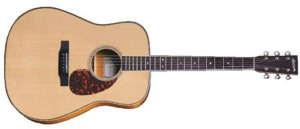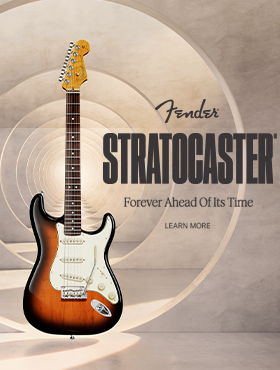 LARRIVEE D05E ACOUSTIC GUITAR
LARRIVEE D05E ACOUSTIC GUITAR
November 29, 2008 | Reviewer: Reza Nasseri
Distributor: PRO MUSIC AUSTRALIA (07) 3375 6400
Jean Larrivée started out as a serious classical guitarist without any formal musical training, practicing five hours a night solely out of passion for his instrument. At the age of 24, his interest shifted to manufacturing when he took up an apprenticeship with a German classical guitar builder, Edgar Monch who was living in Toronto at the time. Jean’s link to Toronto’s thriving folk music scene pushed him away from classical guitars, and in 1971 Jean built his first steel string acoustic.
These days Larrivee guitars, is a family owned company in which John Jr. runs the Canadian workshop responsible for the satin finished acoustics, while Jean Snr., his wife Wendy, son Matthew, and daughter Christine all work at the Californian plant where the gloss finished guitars are made, and the D05E was born.
From the moment I picked up the Larrivee D05E, I instantly realised I was holding much more than a mere acoustic guitar in my hands. This was luxury item suited to the most serious of musicians. Straight out of the box the intonation was perfect after a quick tune, thanks to the compensated TUSQ saddle and nut. A silky-smooth satin finished neck made navigation fast and easy, and is something that I prefer with my own personal collection of guitars.
I started going through the motions, finger-picking a few of my favourite chord progressions just loving the action, tone, sustain and even balance of sound. It’s possible to go from soft and relaxing to loud and grunty, depending on how hard you pick, without any ugly clanking, while a constant warmth sustains behind the attack.
There is a definite eveness and tonal balance to this instrument. All the strings sound equally loud in a chord. Palm-muting the low E results in a tight, deep bass, and tremolo picking the high E results in a clear even attack. It’s not simply the selection of fine tone woods that yields this result, but a clever classical guitar trick that Jean discovered in his early days. Martin guitars invented the X-brace to strengthen and enhance tone to their tops, but Larrivee put a spin on this concept to come up with the parabolic X brace, where instead of using a standard 45 degree angle, the braces are placed at a 90 degree angle to even out the tone. If you’ve previously played an X-brace guitar, you’ll immediately notice the difference between the sound of these two manufacturing techniques.
Plugging into my Soundcraft desk resulted in one of the best piezo tones I have ever heard. The L.R. Baggs iMix pickup sounds unbelievably natural when set flat, but can also produce a wide range of tones by blending the sound-hole pickup with the piezo pickup and by adjusting the notch control. The notch control is essentially a parametric equalizer adjusted by a midrange lever that cuts or boosts a specific frequency range. The phase button was another cool feature that inverts the phase between pickups to strengthen the mids and provide a stronger bottom end.
I did a quick recording of this guitar into my computer, and it sounded like I was going through an expensive mic, rather than simply plugging directly out of the pickup. I guarantee recording enthusiasts are going to love this guitar, because it will be so quick and easy to get great tone. Personally, I can’t wait to plug this guitar into a PA to see how it behaves, and whether it can handle feedback rejection at loud volumes.
The action on this guitar came at a medium height, so it plays fairly quick. The frets were finished flawlessly and the ebony fingerboard was soft and chalky to the touch. The selection of woods are easily some of the finest on the planet, resulting in a beautiful look and angelic tone you’d expect to be associated with expensive custom shop instruments.
The custom made tortoise shell pick guard looks ‘tasty’, as does the abalone rosette, pearl logo and maple binding. Appearance wise, this guitar has all the ‘bling’ of a fancy guitar and the tone to match. The Ivoroid binding on the neck looks and feels fantastic, and the micro-dot fret markers add a stylish modern touch to the guitar as well.
Usually when I review an instrument, I’m very thorough and try to weigh the strengths and weaknesses of the instrument against each other. The only flaw with this guitar is the price. Of course North American labour is going to cost you more than Asian mass production, but it’s all relative, for your hard earned dollars, you get a top shelf instrument that will last forever. The attention to detail, quality materials, and beautiful artwork make for an exceptional guitar. Unfortunately a lot of musicians will never be able to afford such an instrument, but that shouldn’t stop you from going to a music store and trying one of these guitars out.


